Book Review: On Europe's Sacred Ground, Landscapes Are as Compelling as the People
In the late 1990s, Andrew Terrill set off from the southern tip of Italy to walk to the top of mainland Europe. Part 2 picks up with 4,500 miles still to go.
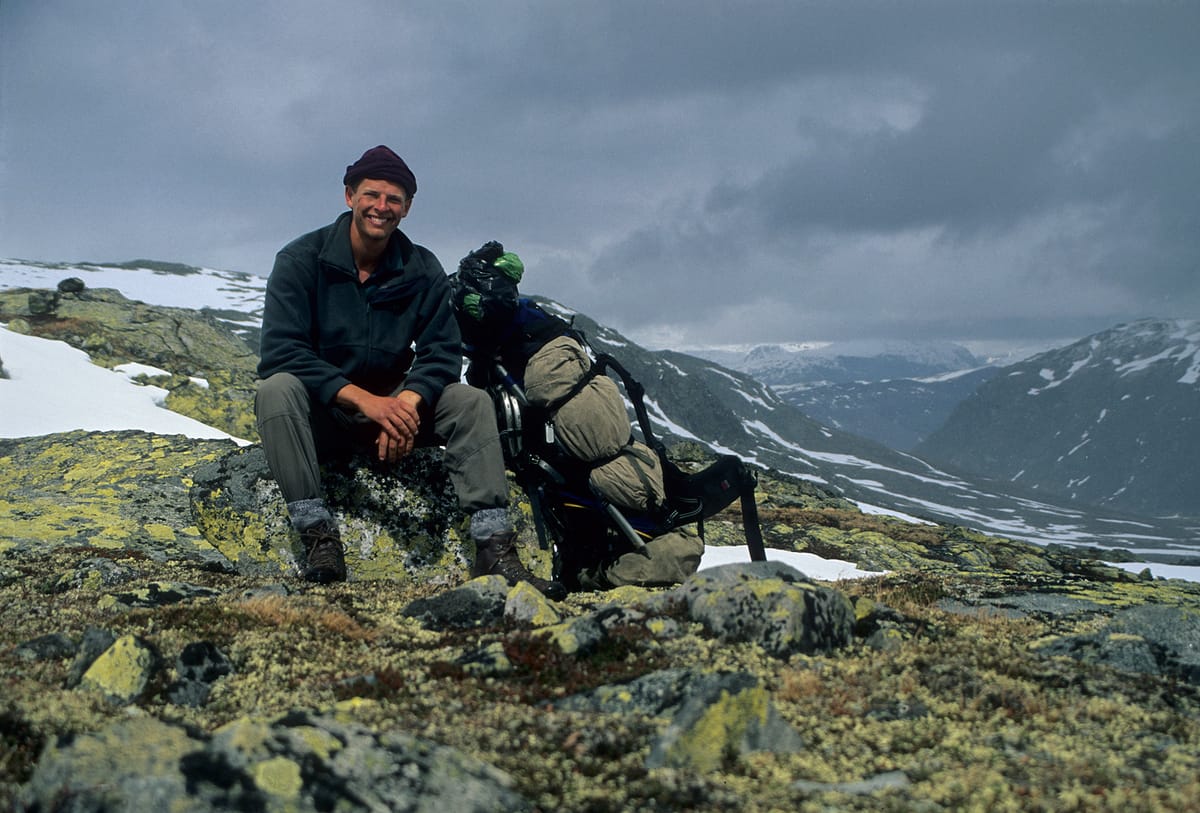
In the late 1990s, British hiker Andrew Terrill set off with nothing but a backpack full of gear from the southern tip of Italy. His aim was simple: to walk north for 7,000 miles. Along the way, he hoped to discover the hidden gems of Europe, the wild corners less trampled by man, and eventually wind up in Nordkapp (or North Cape) at the top of mainland Europe overlooking the vast blue frigidness of the Barents Sea.
The first part of this mammoth journey formed the book The Earth Beneath My Feet, which I reviewed in Autumn of 2021. Now Andrew Terrill is back with part two, On Sacred Ground, which picks up the story in the Austrian Alps, right in the heart of Europe, with some 4,500 miles of travel still to go. ‘The Walk’, as Terrill likes to call it (he has a charming habit of naming campsites and equipment), and this second book, isn’t simply a game of numbers or ticking off mountain ranges though.
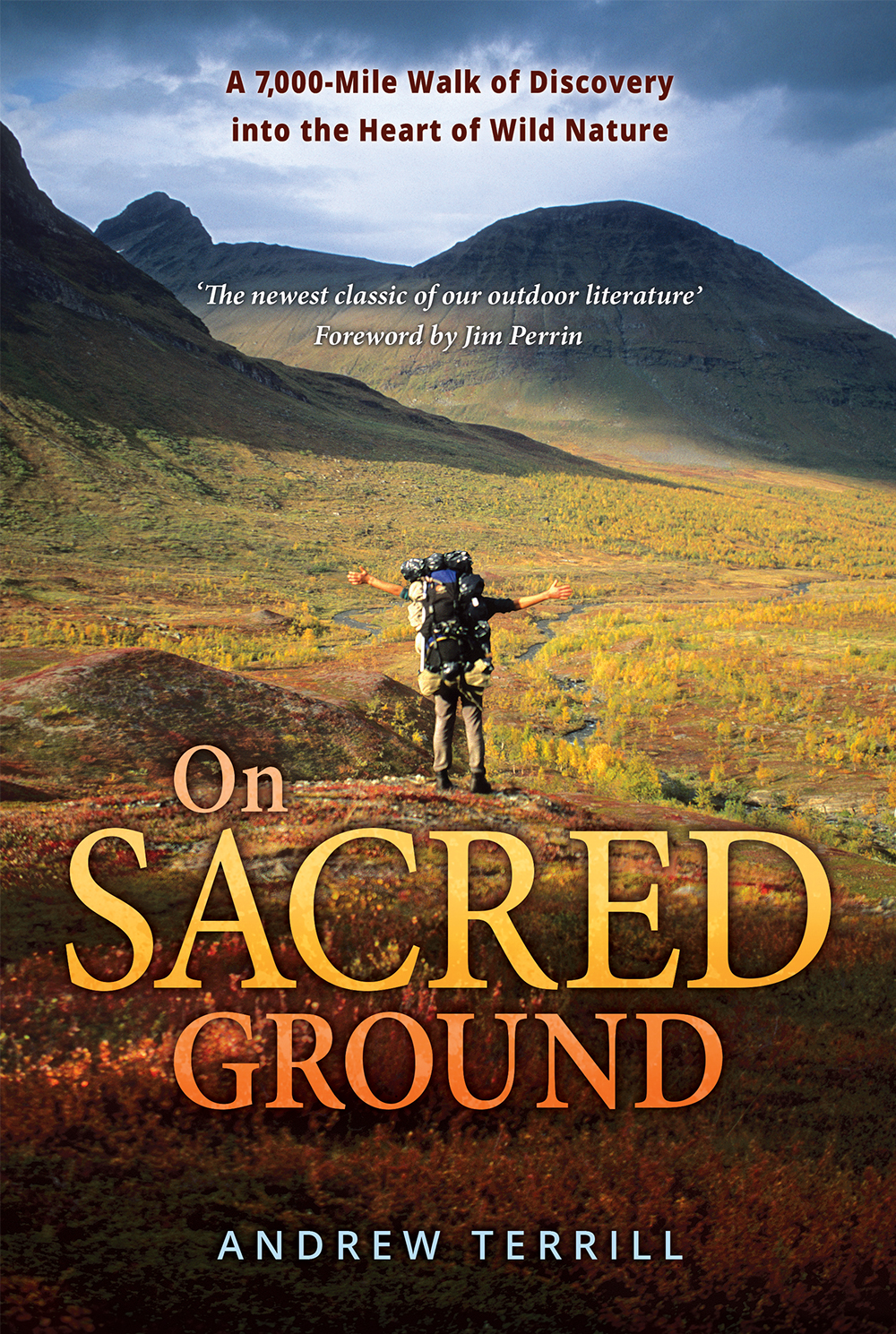
The strength of On Sacred Ground lies in Terrill’s uncanny ability to place you right there alongside him as he connects intimately with the landscape, the people he meets along the way, and the raw honesty with which he battles a sometimes-all-consuming inner dialogue. It is how the ebb and flow of the emotions of such a walk are so openly described, that places this book above your typical backpacking chronicle.
There are many highlights such as the unexpected interest in the landscape of the obscure corners of East Germany, or the huge expansive tundra of Arctic Norway. But for me, some of the most memorable passages are Terrill’s encounters with people. The kindness of strangers was something this lone hiker experienced in spades, and you have to wonder if this would still be the case if the walk was repeated today.
In my review of the first instalment Earth Beneath My Feet, I suggested that the black and white printing didn’t do justice to Terrill’s excellent photography and keen eye for a good composition. While that is still the case in On Sacred Ground, the images aren’t really needed at all – the words already paint a vivid enough picture of this clearly life-changing journey.
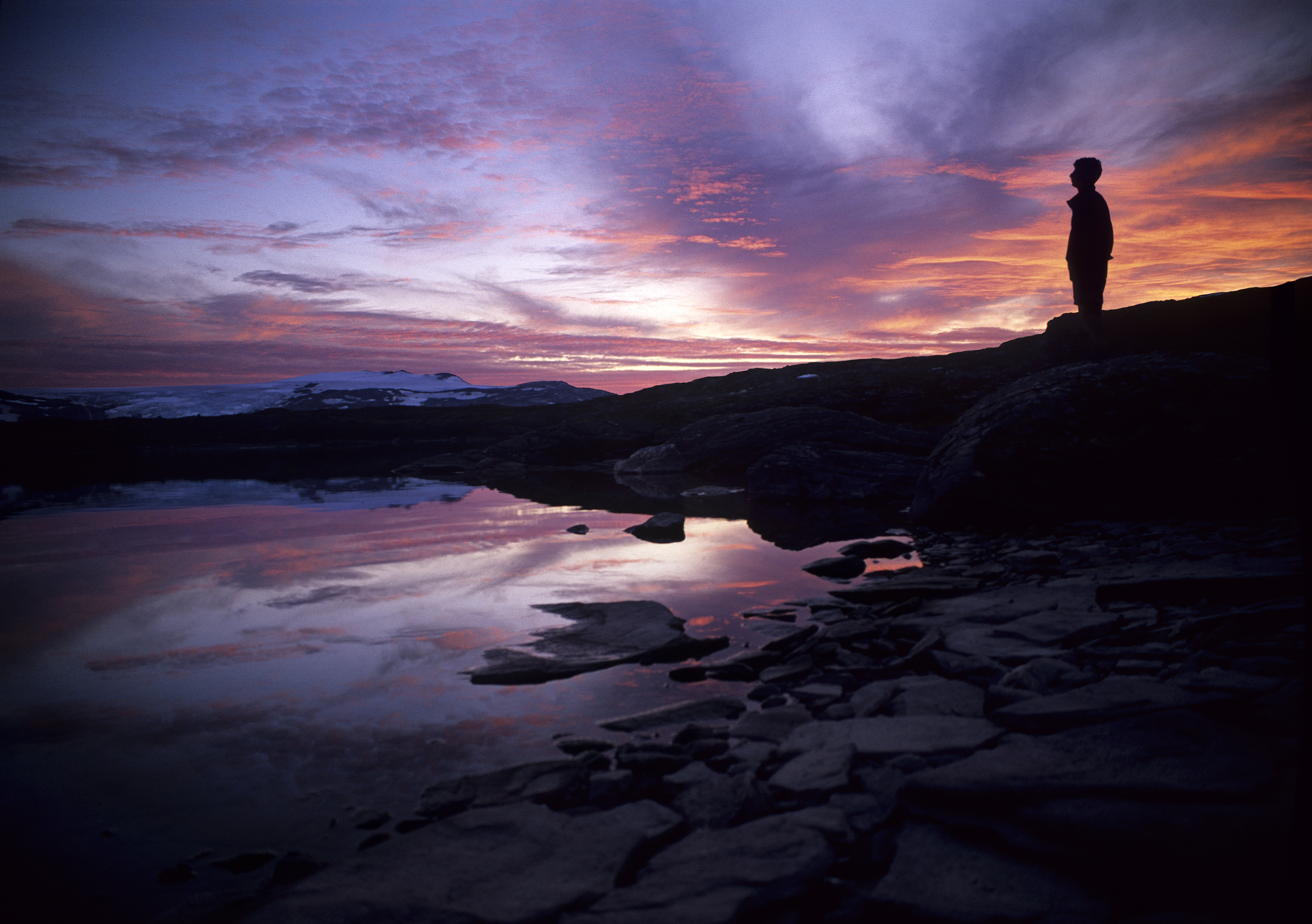
A writing friend of mine sometimes quips that a now late famed outdoor and nature author would doubtless kneel in awe at the simple sight of a flock of gulls, such was their rapture for the natural world. At times I wondered if Terrill would similarly lay on the enthusiasm a little thick. “I worshipped the very ground I walked upon. It wasn’t soil and rock any longer but a home to tread with absolute respect. The earth beneath my feet had become sacred – I was walking on sacred ground,” Terrill eulogises in the mountains of Norway. Yet the joy he manages to derive from each day on the trail is infectious, it rubs off, and you want to hear more of it.
Expedition memoirs can sometimes be dull and formulaic, or worse over dramatised or pretentious. On Sacred Ground however, is written with great humility and in an intense and engaging style that gathers momentum like a runaway train. And a laugh (usually at himself) is never too far around the corner with ‘Mad Mountain Jack’, Terrill’s hiking alter ego.
Come the end I was saddened to finish, and I’m hoping Andrew Terrill will write more. For now, both books will be treasured and keep a permanent place on my bookshelf. They are I believe elevated above many in the genre for their remarkable ability to connect so strongly with the reader. By the end, you too feel that your boots are muddied and soul enriched after countless months of walking through untamed Europe. That takes some doing.
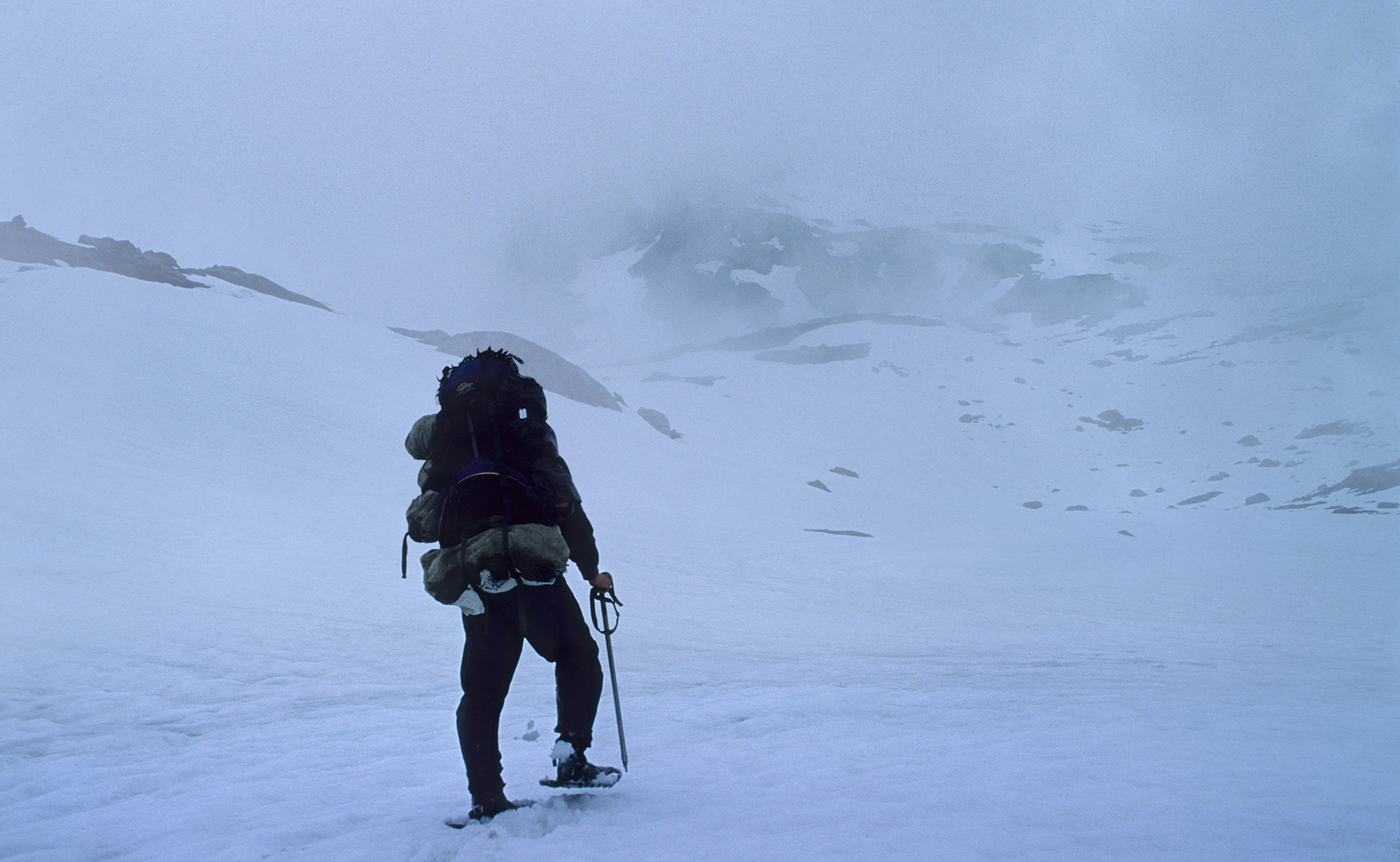
Author Q&A
Ash Routen/The Outdoor Journal: Last time around we asked you if you thought repeating the walk today would change the experience. You answered "In every way that matters, it wouldn’t be different at all." I wonder though, particularly after the devastatingly warm summer in the Alps, if the change in climate in the past half century might have altered the landscape and wildlife on your route?
Andrew Terrill: Well, of course – to deny that there have been changes would be extremely odd! Weather extremes are clearly more extreme, averages are dramatically altered, ecological zones are shifting, glaciers are melting at shocking speed. The evidence of change was clear even twenty-five years ago, and since then the pace of change has only increased.
Glaciers may have shrunk, and climate change does ‘matter’ greatly, that’s for sure. But the potential rewards from a walk like mine remain exactly the same.
But I stand by what I said: that in ‘ways that matter’ the journey wouldn’t be any different. For one thing, change has always been a constant. What in life doesn’t change? Dealing with it isn’t only part of an outdoor journey; it is part of life itself. For another, backpacking is still essentially the same activity. Gear is lighter, but progress still comes from placing one foot before the other. Challenge and adventure can still be found, as can freedom from the stresses of ‘normal’ life. Days can still be stripped back to basics, lived more simply. Solitude can still be found. Personal limits can still be pushed. Lessons can still be learnt. Connection with nature is still possible… for those who seek it. If you get caught in a thunderstorm you’ll still get just as wet!
It’s clear that someone walking into Europe’s wildest places will find some of them altered. But they will still find wild places, and if they spend 18 months embedded in them the experience will almost certainly have impact. That’s the detail that counts: the transformative power of a long and difficult undertaking – of any kind of long and difficult undertaking, not just outdoor adventures. Just as a hard physical journey will still reshape muscles, so the ‘inward’ side of a long journey will still reshape a life. Glaciers may have shrunk, and climate change does ‘matter’ greatly, that’s for sure. But the potential rewards from a walk like mine remain exactly the same. These rewards are the ‘things that matter’, in the context of this answer.
TOJ: Some of the most powerful sections of On Sacred Ground were those where you met with the kindness of strangers. People seem more self-focused than back in the late 90's. Would you really be met with the same kindness nowadays?
AT: Ah, those were some of the journey’s best moments for me, too! Homes opened, help given unconditionally, hospitality from strangers, insights into other lives – gifts that I’d never experienced quite that way before starting the journey.
But yes, absolutely – that kindness still exists. Basic human nature took 200,000 years to evolve and it hasn’t changed in recent years, even though media sources might try to convince us otherwise. Spend too much time online and one could develop a very pessimistic view of humanity! But out in the ‘real world’ away from our screens there’s a different reality: the far-kinder place I experienced on my walk… and still encounter today, even off the trail.
To test this, I posed your question to a couple of backpacking groups online, asking hikers who have been on recent trips if they’ve received help from strangers. The ‘yes we have’ response was immediate and utterly convincing. Tales of spontaneous acts of generosity poured straight in, mirroring my own experiences from twenty-five years ago.
I’m not surprised. It’s all too easy to let the narrative we are fed online affect our outlook. The cure, however, is no different than it was decades ago: step out into the world with eyes open and you’ll find a more positive reality. Approach people patiently and with kindness and most of the time you’ll be treated the same way back. Sure, some people are self-centred and always will be. Sure, the world isn’t perfect – and never will be. And, sure, there will always be change and sometimes it won’t seem good. But as I learnt during my walk: I can’t control the weather… but I can control how I deal with it. And I can’t control other people… but I can control how I approach them, which can alter how they respond to me. I learnt that a smile prompts a smile, that kindness breeds kindness. This hasn’t changed. Go test this for yourself!
step out into the world with eyes open and you’ll find a more positive reality. Approach people patiently and with kindness and most of the time you’ll be treated the same way back
TOJ: I was left wishing I could experience the same passion and enjoyment for the natural world that you clearly did. But I wonder if it takes a long time immersed in the outdoors to truly feel it? The most I've done is 20 days on an expedition.
AT: Well, it might take a significant amount of time. Or it might not! Someone else might find in five days what it took me five-hundred to find! I might simply be as ridiculously slow at connecting with nature as I am at writing books!
However… I do know that previous walks hadn’t got me there, even though the longest lasted six months. Half a year might sound like a long time to walk, but for me it wasn’t long enough. On those earlier trips there were moments when I felt fully embedded in nature, when I believed I was as happy as I could be. But it turned out that those moments of happiness and connection were only shadows of what I ultimately experienced in Arctic Norway.
I think that, for most people, it probably does take weeks – if not months – to strip away the habits and thought processes that modern life forces us to develop, things that can get in the way of paying attention, of living in the moment. I think it takes a significant amount of time to adapt to life outside to the point where even the roughest conditions become emotionally comfortable. (Possibly, you have to live through an entire winter outside to get to this place where discomforts become irrelevant, or even better: valuable!) I think it takes time to fully let go of expectations, to stop thinking about what we want from a walk or a climb and to accept it as it is, to see value in it no matter how it plays out. I think it takes time to tune in to all the subtleties of nature, to ‘see’ and ‘feel’ it with all our senses and instincts – senses and instincts that we simply don’t use during our indoor lives, senses and instincts that need time and nurturing to reawaken.
But it’s not only about time. Experiences play a massive part. Every experience has potential to change us. My own journey had a lot of ‘experiences’ – some good, some bad, some intense, some subtle. But they all built up one upon another, layer upon layer, changing me incrementally, laying the foundation for who I became, for what I was open to, and for what I ultimately found: an elevated state of happiness and connection that was utterly unimaginable prior to experiencing it; something I might even have rolled my eyes at if I’d seen someone else trying to describe it. But it was real!
Experiences add up – perhaps that’s the biggest takeaway. The beautiful thing is we get to choose our experiences. Choose the right ones, choose enough of them, let them all come together, and who knows what we might find!
TOJ: Do you plan to revisit sections from the walk again, or are they best left in the past?
AT: There are so many places I’d love to go back to – although flying to Europe simply to go for a walk is environmentally questionable, especially when I have perfectly good mountains on my doorstep here in Colorado!
But the mountains and forests of Abruzzo call. I could happily spend months back there. I don’t think I did the area justice – I saw so little of it when I was merely ‘passing through’. It would be interesting to go back to Calabria as well. I spent a lot of time in Calabria lost, thanks to the ‘less-than-adequate’ maps I had at the time. It would be fascinating to try again with a satellite map and a GPS!
I’d love-love-love to go back to Norway and walk the length of the country again. Knowing what I now know would make it a very different journey. I’d carry a far lighter load, for one thing. And probably better snowshoes. And definitely a tent that doesn’t leak!
But to be honest, no place or experience from the journey has been left in the past – or should have been. ‘Living in the past’ is often framed as bad thing, but I’m not so sure that’s right. As already mentioned, past experiences add up. They make us who we are. Why banish any of them ‘to the past’ when they can still bring benefits now? Instead of ‘living in the past’ consider it ‘the past living in the present’. Consider the past the foundation that our present sits upon, still there beneath our feet. What I found in Arctic Norway, for example, hasn’t left me. Each day is richer because of it. A return to Norway or any part of the journey wouldn’t really be a ‘going back’ – it would be a continuation, a moving forward. It wouldn’t change or spoil what previously happened. It would only add to it.
TOJ: The books were decades in the making. How difficult did you find the writing process?
AT: Very difficult! Some writers seem able to type out a book in a few weeks. But that’s not me! It can take me a long time to even get a single sentence right. I might have a clear idea in mind, but when I attempt to get it down it will frequently wobble out of shape like clay on a potter’s wheel touched by a beginner. It’s almost comical how hard I make it look!
I’m not a natural writer, that’s become clear to me. But despite the difficulty of the process it’s grown into something I treasure for the ‘journey’ of growth it can be. At first, telling the story of my walk seemed fairly simple. It wasn’t like writing fiction: they key events actually happened, the story already had good shape, and so all I had to do was transcribe it… or so I thought. But then I realised that something was missing. A mere retelling of events lacked depth. The tales were entertaining enough, but ultimately they didn’t mean anything.
WhyWhat
So I pushed myself to go deeper, and that’s where the hard work really began. I tried to understand the whys and whats of the journey. Why had I reacted the way I did? Why was a place the way it was? Why had events unfolded the way they did? Why had I even begun the journey in the first place? What was the sheer bloody point of it all? (As my father might still ask!)
Searching for honest answers became a second life-changing journey, one that was far harder and took far longer than the original walk. Honesty was the crucial thing. Without it the story would have no value, neither to me nor to a reader. And of course, it wasn’t enough to merely find honest answers and understand them myself – I had to articulate them so that they made sense to others. Looking back, I’m glad I didn’t keep track of how many thousands of hours and rewrites this took. Like the size of my backpack during the hike, the amount of my life I put into writing is simply embarrassing!
The task I set myself was to create a book that used a few emblematic moments to accurately describe an entire journey, that was hopefully entertaining and easy-to-read on the surface, but that could also offer deeper layers for anyone who cared to explore them. Once I’d finished writing, and once the story had been edited and published, I still had no real idea if it would have value to anyone else. But letters from readers show me that it might. People have told me that they can identify with the journey: with its varied challenges, with how being in nature feels, with why it feels that way. I wrote to share, and people have shared back – a fantastic reward for two decades-plus of work!
--
On Sacred Ground was published on October 1st in hardback, paperback, and ebook by Enchanted Rock Press. It is available on Amazon, and for more details see, andrewterrill.com.



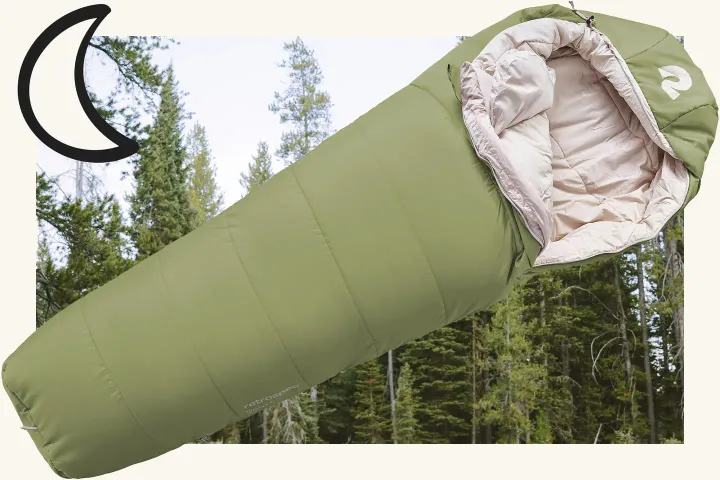
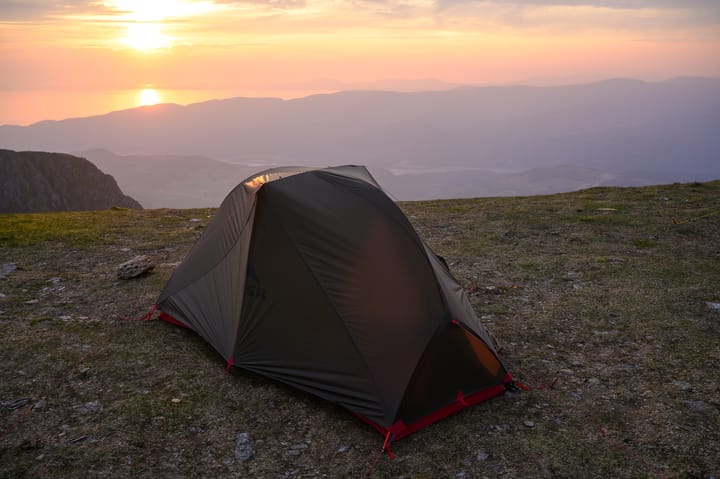
Comments ()